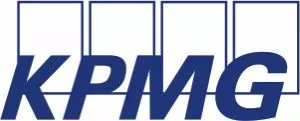Introduction
The world is constantly being shaped by innovative technologies. Businesses are constantly sourcing for ways to enhance their operational models while keeping up with the fast-paced technological evolution. Tax authorities across the globe are also making attempts to meet up with these changing demands. Consequently, the Nigerian government, like the rest of the world has introduced several fiscal policies and laws geared towards adopting and improving the use of technology to foster effective tax administration. The effect of the Covid-19 pandemic has also necessitated the need for tax authorities to embrace technology as it is obvious that manual administrative procedures are not sufficient to generate the revenue required to meet growing government expenditures.
The current technological situation of the State Board of Internal Revenue Services (SBIRS)
In analysing the state of technology at the SBIRS, we have categorised the current situation into three groups which are :those who have embraced technology, those who are gradually moving towards technology, and those who are yet to embrace the use of technology in any form.
For the first category, the Lagos State Internal Revenue Service (LIRS) can be referred to as primus inter pares, as it has taken the lead and set the pace in the adoption of technology to facilitate its administrative processes. It can even be argued that the use of technology has significantly contributed to the LIRS' ability to generate the highest IGR by any state in Nigeria. Little wonder that the LIRS is continuously improving its information technology system to simplify the tax administration process for taxpayers. The LIRS was the first to begin the issuance of the electronic Tax Clearance Certificate (e-TCC) as far back as 2004 and is the first SBIRS to migrate to e-filing of employer and individual annual tax returns in 2019. Some of the significant strides made by Lagos State also includes auto-generating individual taxpayer IDs online in very simple steps via the LIRS e-Tax platform, linking individuals' Bank Verification Number (BVN) to its e-tax platform, auto-generating PAYE receipts on its e-tax platform, holding tax audit meetings through video conferencing, electronic submission of objection letters, and virtual official correspondences with tax officials. Therefore, it is no wonder that the LIRS was able to rise to the challenges from the pandemic.
The SBIRS covered under the second category are those that are gradually moving towards technology. The Covid-19 pandemic is one of the factors that triggered this gradual movement towards embracing technology. Prior to the outbreak of the pandemic, some states began the gradual shift towards online tax reporting, while some others only adopted e-filing services in 2021 as a response to the pandemic. Although this is regarded as a step in the right direction, nothing seems to be done about improving other aspects of the tax administration process such as tax audit meetings, TCC applications, electronic correspondences, and submission of documents.
The third category of SBIRS are those whose end-to-end process are manual. Under this category, we have some SBIRS that do not have the basic official website where taxpayers can access information about the revenue services and their tax rights. These SBIRS remain proponents of physical interactions.
Challenges/inhibitors with the adoption of technology by the SBIRS
While the use of technology has become pertinent in our society, we cannot ignore the associated challenges that come with it. In a country like Nigeria where government agencies are heavily reliant on manual procedures, most government officials still find it difficult to use the electronically submitted documents to update taxpayer's information and records. Rather, they would rely on hardcopy files to issue their reports as they believe physically authenticated documents are considered generally more acceptable than e-version.. Even the SBIRS that are under the first category still require taxpayers to submit hard copy documents, which are manually stamped and stored in physical files, in addition to the electronic submission. Some of the reasons stated for the manual process are:
- Data protection and privacy: The concerns over security of personal data and privacy is one of the reasons given by tax authorities for the ongoing manual procedures as there are currently no sufficient measures to protect data collected from virus/malware attacks and handle cases of cyber data breaches. This reason however is not sufficient for data privacy as physical copies are also prone to mishandling and loss of data.
- System downtime: The SBIRS that have implemented technology solutions still demand for manual duplicates to mitigate system downtime challenge. Server builds that do not have sufficient capacity to manage data traffic from taxpayers also results in significant downtime. Other outages such as network and power are also reasons itemized for manual back-up. In addition, usage spikes and the associated storage failures as a result of poor management of large volume of data has encouraged the continued reliance on paper documents.
- Poor interface development: The lack of a user-friendly interface is another setback experienced by taxpayers. Websites of the SBIRS that are gradually adopting the use of technology are not easy to use, much to the frustration of taxpayers. This may be due to inadequate consultation of the final users (taxpayers) during the development phase. Some websites are difficult to navigate while others have a cumbersome process which has made it difficult for taxpayers to have a seamless experience on the web portals. In some instances, portals for uploading information redirect the user to an entirely different page, not related to that of the SBIRS, or the effective time information upload is poor. Hence, what eventually happens is that parallel paper filing is required to augment the e-filing, which is tantamount to taking one step forward and two steps backward.
- Inadequate IT experts: Presently, most of the tax officers in the SBIRS are accountants/tax experts. These categories of individuals have the requisite skills for managing the present tax issues. Nevertheless, for effective tax management of the future, SBIRS require data analysts, data scientists, IT experts etc., who have the requisite skills to manage the technology migration. The absence of these employees is one of the reasons for not adopting technology.
Benefits to be derived from the use of technology
It can be said that the future of tax will be ultimately driven by technology. This is because most individuals and businesses now operate in the digital space and tax authorities can only identify the taxpayers who fall within their respective jurisdictions by fully embracing technology.
The use of technology will enable the tax authorities to identify taxpayers, verify information, and ascertain the authenticity of tax returns filed, thereby reducing incidences of tax avoidance and tax evasion. In increasing the tax net, the SBIRS can generate more revenue as it is easier to keep track and monitor taxpayer activities and provide a solid base for revenue projection.
Another key benefit to be derived from adopting technology in tax administration is the obliteration of manual paperwork in the filing of tax returns and preparation of tax assessments, thereby leading to administrative efficiency, in conformity with the canons of a good tax system of simplicity, equity, and efficiency. This will in turn reduce the burden of compliance and compliance-related costs such as travel time and expenses.
The way forward
SBIRS is encouraged to consider the following recommendations to effectively manage the tax administration process:
- Rapid migration towards the automation of tax processes to the
e-tax system, whereby taxpayers can easily access information from
the comfort of their homes and offices. In the light of current
realities and the great reliance on virtual technology, it is
obvious that manual procedures would be rendered obsolete shortly.
Therefore, SBIRS that are still lagging in the use of technology
are required to automate their processes.
- Adequate training of tax personnel on the use of technology.
One of the reasons why tax officials are usually insistent on paper
documentation is that they lack knowledge of the information
technology systems, hence their preference for manual procedures.
Equipping them with sufficient knowledge on the use of technology
will drastically reduce their tendencies for manual processes. If
they are properly trained, they will become accustomed to the ease
that is obtainable from using technology to carry out their tasks.
They will also be more open towards the use of advanced tools such
as video conferencing for tax audits and other meetings and which
will reduce travel time and promote cost efficiency.
- Using efficient and effective service providers in running
their database and information systems to minimize recurrent cases
of system downtime. The service providers should be able to cater
to the peak periods such as statutory filing deadlines when there
would be an influx of taxpayers on the tax filing portals at the
same time.
- Having a user-friendly interface on websites and other
web-based platforms cannot be over-emphasized in the bid to achieve
an efficient tax administration system. The interface should be
easy to use such that taxpayers do not have to wade through a
tedious and cumbersome process to fulfil their tax
obligations.
- Data protection mechanism should be effected to ensure privacy of data.
Conclusion
The use of technology in achieving an efficient tax administration by the SBIRS in Nigeria cannot be overlooked if they are to achieve the aim of increasing its contribution to the nation's IGR, especially as crude oil prices have fallen globally, and as a response to the challenges created by the Covid-19 pandemic. An overview of the SBIRS today shows that there is a gradual shift towards the use of technology, as evident in the fact that the majority of the SBIRS have official websites which are fairly operational while also some states are gradually moving towards e-filing systems. However, considering the speed at which technology is constantly improving in today's world, especially in the field of artificial intelligence, we can say that the SBIR's are moving at snail-speed towards the use of technology.
The impact of Covid-19 led to a rise in some SBIRS embracing a system of tax administration, especially e-tax filings. However, even for such SBIRS as the LIRS that is a pacesetter in electronic tax administration, there are still areas that they are lagging such as the e-TCC application, which is still being done manually. This is quite ironic considering that the LIRS issues electronic TCCs, but the application process requires physical submission. In line with one of the cardinal principles of taxation, which is convenience, it, therefore, behooves the SBIRS to create a conducive and easy administration process for itself and taxpayers.
The content of this article is intended to provide a general guide to the subject matter. Specialist advice should be sought about your specific circumstances.


